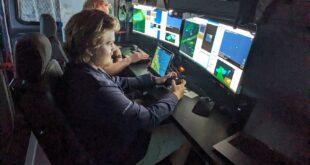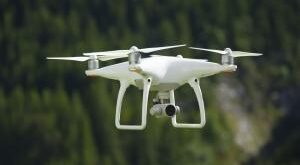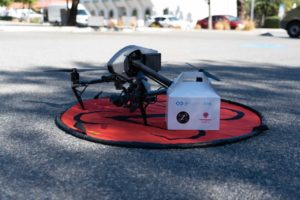 Meet Zing Drones. This Florida drone delivery start-up plans to offer Uber-like deliveries.
Meet Zing Drones. This Florida drone delivery start-up plans to offer Uber-like deliveries.
By Jim Magill
Everyone is familiar with delivery services such as Door Dash and Uber Eats, which allow consumers to order deliveries of food by accessing an app on their smart phone. Now, a small Florida-based start-up company is hoping to offer the same service nation-wide, featuring delivery by drone.
Zing Drones is gearing up to train potential Part 107 pilots in the use of the company’s winch technology developed for use on DJI Inspire 2 drones. At the outset, Zing will employ its own pilots to fly company-owned drones, with the ultimate goal of enlisting private drone pilots who will act as independent contractors, using their own drones to make deliveries, Ian Annase, Zing Drones founder and CEO, said.
Annase said the company plans sometime next year to hire a regional flight manager to begin the training process. As the company expands its operations into different U.S. cities, additional flight managers would be hired.
“We want the pilots to go through some training with Zing before they start flying with us to make sure they know how to operate the winch,” he said. “The pilots, if they have an Inspire 2 — that’s our go-to drone for home delivery — we would be able to attach our piece of hardware to it.”
Once trained, these pilots would then fly on fixed schedules, determined by the flight manager in their respective areas.
Funding a drone delivery start-up
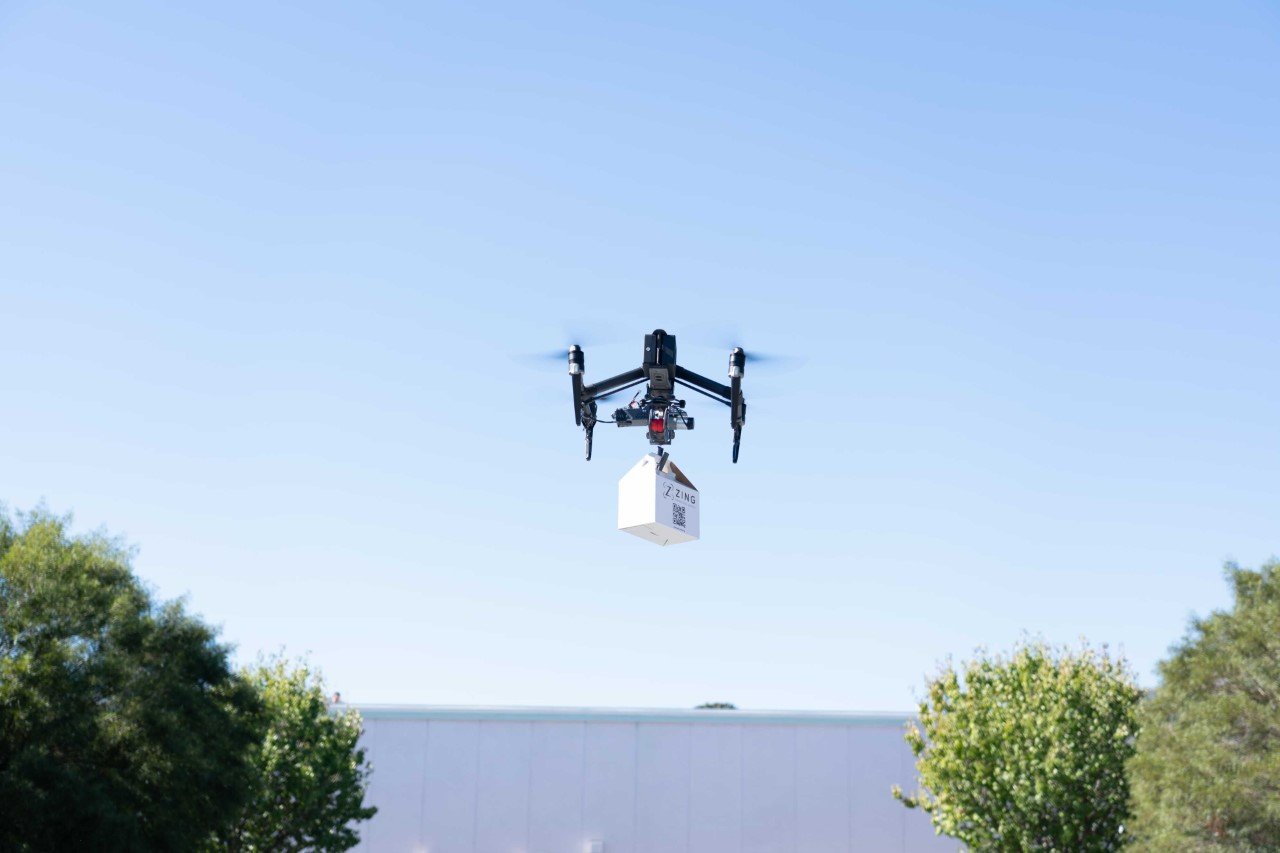 The company, which hopes to begin making commercial deliveries next year, is currently earning revenue through sales of its drone kits, including the winch hardware and the drone. “We have the ordering app linked up in Stripe,” Annase said. “We’ve done a few demos around the United States, just showing what the platform can do.”
The company, which hopes to begin making commercial deliveries next year, is currently earning revenue through sales of its drone kits, including the winch hardware and the drone. “We have the ordering app linked up in Stripe,” Annase said. “We’ve done a few demos around the United States, just showing what the platform can do.”
Zing raised $75,000 last year in a pre-seed round of funding, and is currently raising equity with a crowd-funding campaign through an online fundraising site, a common strategy used by other drone start-up companies. Annase said the company hopes to raise $100,00 through this method.
“Once we get to $100,000, we should start ramping up,” he said. The company’s ultimate goal is to raise $750,000 in equity funding.
Zing has conducted several test deliveries under the FAA’s Part 107, which allows a drone pilot to fly over a body of water while maintaining a visual line of site with the aircraft. In one such test, conducted in New Orleans, a pilot flew a payload of beignets over the Mississippi River. The company plans to begin doing Part 107 deliveries in the small Tampa Bay community of Tierra Verde within the next month or two.
The next step for the drone delivery start-up is to obtain the Category 3 certification from the FAA, which would allow its pilots to fly over people in order to make deliveries in suburban areas within a one-mile radius of the flight’s point of origin, Annase said.
“Right now, we’re very limited under Part 107, which is very location-based,” he said.
The ultimate goal for Zing is to obtain the right to conduct package delivery by drone through the FAA’s Part 135 air carrier certification, “the only path for small drones to carry the property of another for compensation beyond visual line of sight,” according to the FAA’s website.
Once Zing gets the go-ahead to make commercial drone deliveries under Part 135, customers will have two options to order their drone-delivered meals: By placing their order through the Zing ordering app, which is available in the App Store; or they call up any restaurant that offers drone delivery as an option.
“Either way, it gets loaded into our system and once the order is ready for pickup, the pilot would take off from their fixed location and go to the restaurant,” Annase said. Once the drone is hovering above the restaurant, the pilot will deploy the winch device to lower a hook down to an employee at the restaurant, who would attach the delivery order.
The pilot will then use the winch to bring the food up to the drone, to be flown toward the waiting customer. Once it arrives above its designated destination the package will be lowered down again, using the winch.
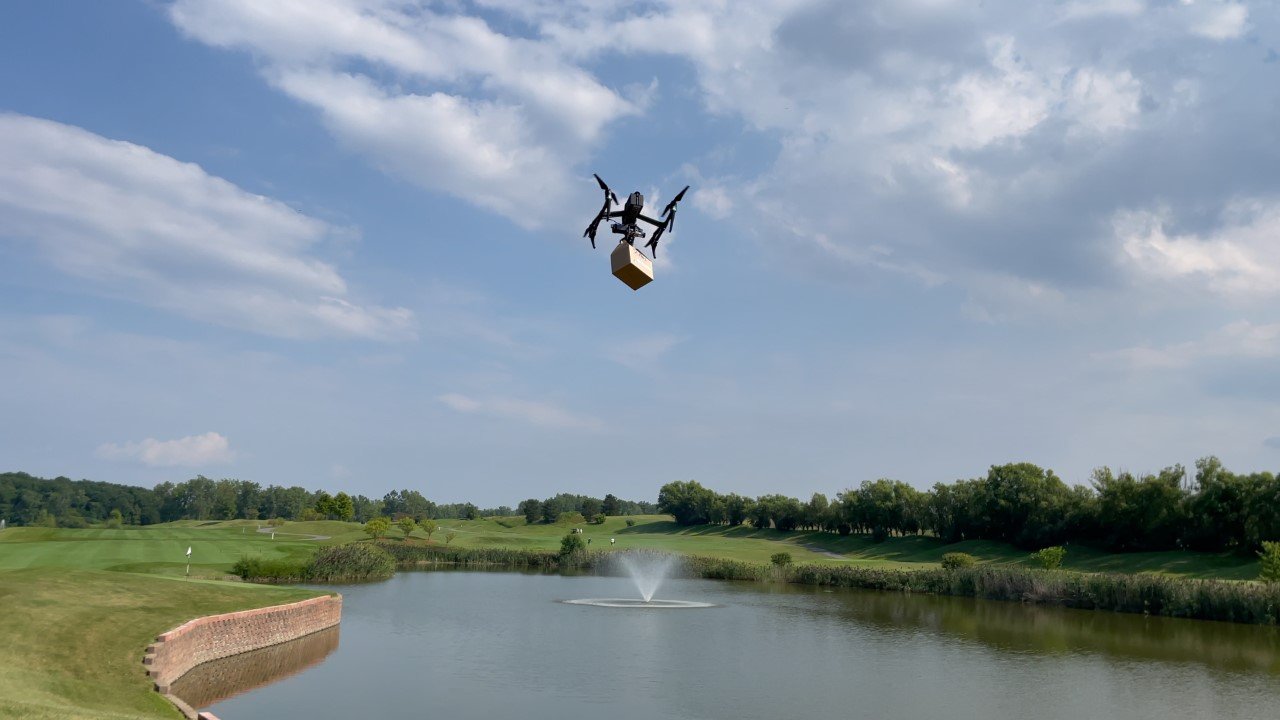 “The way the hook works is it automatically drops off the package with gravity. There doesn’t have to be anybody under it to receive it,” Annase said. He said the delivered products could be dropped off in the customer’s yard or directly into a smart-mailbox system. Zing is currently working with two smart- mailbox companies to set up their systems in neighborhoods where the company plans to initiate its direct deliveries.
“The way the hook works is it automatically drops off the package with gravity. There doesn’t have to be anybody under it to receive it,” Annase said. He said the delivered products could be dropped off in the customer’s yard or directly into a smart-mailbox system. Zing is currently working with two smart- mailbox companies to set up their systems in neighborhoods where the company plans to initiate its direct deliveries.
The drone would then return back to its home base, where the pilot will swap out the drone’s battery to prepare it for the next delivery.
Zing’s patent-pending winch system is designed to be attached to existing drones. “The one we built for the Inspire 2 is going to be a universal platform,” Annase said. With the addition of an adaptor plate, the winch can be fitted onto any similarly sized drone.
As designed, the winch can lift a payload of about 5 pounds, but it can be customized to handle heavier payloads in accordance with the individual customer’s needs. “We can adjust the torque,” he said. “It’s a tradeoff. We can lift more weight with it. It’s a matter of the use case and how fast they need [the payload] to be dropped off.
While Zing plans to begin its delivery operations in its home state of Florida, the company eventually hopes to expand its business model to cities across the U.S. “We’ve done demos with this platform in Ontario, California; Los Angeles, Detroit, Miami and St. Petersburg,” Annase said.
Read more about drone delivery: medical drone delivery, Walmart drone delivery, Google Wing’s delivery program, and the deep dive on last mile delivery under Part 107.
 Jim Magill is a Houston-based writer with almost a quarter-century of experience covering technical and economic developments in the oil and gas industry. After retiring in December 2019 as a senior editor with S&P Global Platts, Jim began writing about emerging technologies, such as artificial intelligence, robots and drones, and the ways in which they’re contributing to our society. In addition to DroneLife, Jim is a contributor to Forbes.com and his work has appeared in the Houston Chronicle, U.S. News & World Report, and Unmanned Systems, a publication of the Association for Unmanned Vehicle Systems International.
Jim Magill is a Houston-based writer with almost a quarter-century of experience covering technical and economic developments in the oil and gas industry. After retiring in December 2019 as a senior editor with S&P Global Platts, Jim began writing about emerging technologies, such as artificial intelligence, robots and drones, and the ways in which they’re contributing to our society. In addition to DroneLife, Jim is a contributor to Forbes.com and his work has appeared in the Houston Chronicle, U.S. News & World Report, and Unmanned Systems, a publication of the Association for Unmanned Vehicle Systems International.
Miriam McNabb is the Editor-in-Chief of DRONELIFE and CEO of JobForDrones, a professional drone services marketplace, and a fascinated observer of the emerging drone industry and the regulatory environment for drones. Miriam has penned over 3,000 articles focused on the commercial drone space and is an international speaker and recognized figure in the industry. Miriam has a degree from the University of Chicago and over 20 years of experience in high tech sales and marketing for new technologies.
For drone industry consulting or writing, Email Miriam.
TWITTER:@spaldingbarker
Subscribe to DroneLife here.
https://dronelife.com/2021/12/26/drone-delivery-start-up-zing-taking-the-uber-model-to-the-sky/
 Unmanned Aerial Vehicle The latest drone news
Unmanned Aerial Vehicle The latest drone news
